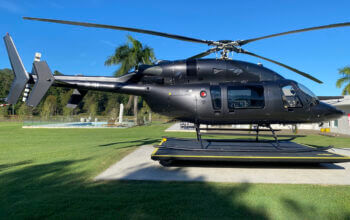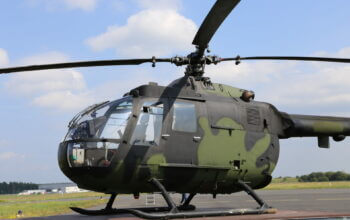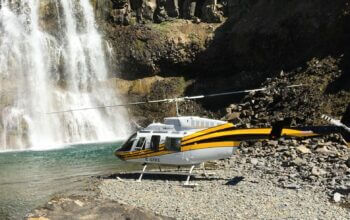With Airbus’s Vahana eVTOL demonstrator recently completing its 100th test flight, the team behind the aircraft has shared new insights into the flight testing process.
In an Oct. 10 blog post, head of flight test Matt Deal and integration and test engineer Nico Kokocinski describe a typical day for the Vahana program at the Pendleton Unmanned Aircraft Systems (UAS) Test Range near Pendleton, Oregon. Not only has Vahana been flying without a human on board, the aircraft is completely self-piloted, following a predefined flight plan for each flight.
“No one is ever in direct control of the vehicle,” Deal and Kokocinski explain. Vahana’s pre-programmed flight plans can include climbs and descents, turns, and other maneuvers designed to reveal its performance and handling qualities. All flight plans are validated through multiple simulation methods before being flown on the full-scale aircraft.

While Vahana technically flies itself, at least seven engineers and technicians are present for each flight to monitor systems via telemetry, inspect the aircraft, and conduct the actual test. According to Deal and Kokocinski, in the event of an unexpected behavior during the flight, Vahana can perform one of several contingency maneuvers, including returning to its starting position to land, landing immediately, or activating a parachute.
To minimize such unexpected behavior, the Vahana team has expanded the aircraft’s operating envelope gradually in order to adapt the vehicle or control logic “before issues become hazards. For instance, after completing our extensive ground test campaign, Vahana flew at 12 intermediate speeds to demonstrate stability and performance between hover and its design cruise speed of 100 knots,” the authors write.
Because batteries store less energy than fuel and need to recharge between flights, Vahana’s engineers designed its batteries to be swappable in less than 10 minutes, allowing them to perform multiple flight tests in a day. The aircraft has two 300-pound (135-kilogram) lithium-ion batteries that slide into the vehicle on rails using a custom cart. They are then charged off aircraft with a charging station normally used for electric cars.

According to Deal and Kokocinski, full-scale flight testing has been critical to the advancement of the program.
“Simulation can tell us a lot about the behavior and performance of the aircraft; subscale vehicles can demonstrate that the general configuration and control logic are sound; but only full-scale flights prove that our designs and systems perform as well as expected, especially when considering scaling and aeroelastic effects,” they write. “In addition, the data collected in flight helps improve models and design tools to more closely match real-world behavior.”
Read more about the Vahana flight test program here.








